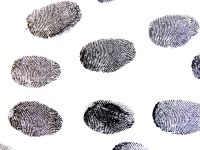Can I Have My Fingerprint and Photograph Records Destroyed?

If you are arrested or charged on suspicion of having committed a crime, the police will take certain details, sometimes known as criminal particulars, so they can verify your identity.
These are usually in the form of fingerprints and photographs.
Other information that police may seek to obtain for the purposes of identification includes voice samples, handwriting samples, and video recordings.
Even if you are later found not guilty, or the charges are withdrawn, police will still have your personal details on file.
Many people are not aware that police may retain this type of personal information, regardless of any court outcome, and unfortunately, it can be difficult in some cases to have the records destroyed.
As long as you are over the age of 18 at the time the material is gathered, you have no automatic right to have identification material destroyed, and you need to make an application to authorities.
If you are not sure what records the police may be keeping about you, it is possible to get access to this information through a Freedom of Information request.
When can I get my records destroyed?
NSW charges
If you have had identification material taken relating to a NSW offence, whether or not your records can be destroyed is at the discretion of the Criminal Records Unit.
There are certain circumstances that can form the basis of an application to have your photograph and fingerprint records destroyed, and these include:
- If you were acquitted or had your conviction quashed on an appeal.
- You were discharged without conviction more than 15 years ago, and have had no other convictions in the meantime.
- The charges were dismissed or withdrawn.
- You were a juvenile at the time.
- The conviction was very old and/or very minor.
As a general rule, applications for the destruction of identification material are only likely to succeed in cases where they relate to convictions or charges that can also be removed from criminal records.
Commonwealth charges
If you have been charged with a Commonwealth offence, evidence taken must be destroyed in the event that 12 months or more has passed since the evidence was gathered, and proceedings were discontinued or never instituted against you.
These types of records should also be destroyed if you are found guilty but no conviction is recorded against you, and if you are acquitted.
Evidence regarding identification can’t be destroyed if it relates to the investigation of any other offences.
Juvenile convictions and records
Those aged under 18 years have more rights than adults when it comes to having identification material destroyed.
For those between the ages of 10 and 17 who have been charged with a Commonwealth offence, identification evidence must be destroyed 12 months after it was taken if proceedings haven’t commenced, if the offence is proven but no conviction is recorded, or if the person is acquitted.
For young people who come into contact with the Children’s Court in NSW, photographs and fingerprints must be destroyed if they are found not guilty, or if the charges are dismissed.
Destruction is usually ordered by the court, but even if it isn’t, the information must still be destroyed.
This is to help protect the rights of juveniles and help reduce the chances that a mistake made while still a minor won’t have an unnecessary impact on their future.
How can I apply to have my fingerprints destroyed?
If your charges have been dropped or you have been found not guilty, don’t make the assumption that all your records will automatically be destroyed.
You can make an application under Freedom of Information legislation to find out whether police are keeping personal information about you, including fingerprints, or any other identifying information.
In the event that information which you would prefer to have destroyed is being retained, you can apply in writing to the Commissioner of Police to request that they destroy your palm prints, fingerprints, and any other identification material they are holding.
Under Section 137A of the Law Enforcement Powers and Responsibilities Act, if the application meets the criteria, the prints must be destroyed as soon as is reasonably practical.
When you are applying to have fingerprints destroyed, your application should include the following:
- Your full name and date of birth,
- The details of the offence you were charged with,
- The date of the charge,
- The date of your court appearance (if applicable), and
- The outcome of the case.
If you do not provide all the required information, it could mean your application is delayed or declined.
You should also ideally include:
- The reference printed at the top on your court attendance notice, which starts with the letter ‘H’ and is followed by several numbers
- The name and rank of the officer who charged you,
- The police station where you were charged,
- The date and court where your case was finalised, and
- A copy of the notification of outcome that you received from court, and any good behaviour bond if applicable.
If you are in any doubt as to what to include, a criminal lawyer will be able to advise and assist you.
Although it won’t happen automatically, it is certainly possible to have your fingerprints and photographic evidence destroyed as long as your matter falls into the applicable criteria,
Unfortunately, unless you are a juvenile, it is unlikely you will be able to have your fingerprints destroyed if you have been convicted, unless it was a very minor matter or it happened a long time ago.






